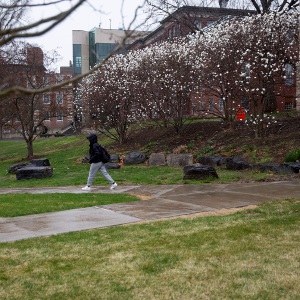Bigger buffer for wetlands on warrant for Enfield Town Meeting
| Published: 01-12-2023 10:26 PM |
ENFIELD — A proposed zoning amendment to expand the buffer protecting prime wetlands from 50 feet to 100 feet will appear before Enfield voters at March’s Town Meeting. The amendment is recommended unanimously by the Planning Board.
Prime wetlands are defined by the town as any wetland that “because of its size, unspoiled character, fragile condition or other relevant factors, make them of substantial significance,” and exist on five locations in Enfield. A buffer largely means a naturally vegetated, non-disturbance area.
New Hampshire mandated a statewide 100-foot wetland buffer until 2010, when it ceded the decision to local authorities. At that time, Enfield had a 50-foot buffer for wetlands but didn’t act to expand the distance for its prime wetlands. The proposed zoning amendment would restore zoning to the state’s initial requirements.
“I don’t think there was ever a whole lot of question on it,” Planning Board Chairman David Fracht said. “Wetlands are important for quite a number of reasons — for flood control, maintaining surface water quality and groundwater quality and (as) habitat for wildlife and fish.”
Not many properties will be impacted, Fracht added, and most prime wetlands are already town-owned or otherwise conserved.
“This is a simple change and doesn’t impact a lot of people,” he said. “It’s consistent with our newly adopted town plan, which basically says that our resource protection, particularly our water resources, is a very valid planning goal. And we should do everything that we can to continue to protect these natural resources — which are ultimately of benefit to the whole town.”
A 100-foot buffer filters out roughly 80% of pollutants, said Sandy Crystall, a former member of the Department of Environmental Service’s Wetland Bureau. “When you have a narrower buffer, you’re going to have less vegetation that provides a lot of the benefits to the water quality.”
Enfield’s municipal water is drawn primarily from wells, which is an added impetus for the expansion, Conservation Commission Chairman Jerold Theis said.
Article continues after...
Yesterday's Most Read Articles
 Football helmet maker buys Lebanon’s Simbex
Football helmet maker buys Lebanon’s Simbex
 James Parker granted parole for his role in Dartmouth professors’ stabbing deaths
James Parker granted parole for his role in Dartmouth professors’ stabbing deaths
 Zantop daughter: ‘I wish James' family the best and hope that they are able to heal’
Zantop daughter: ‘I wish James' family the best and hope that they are able to heal’
 Kenyon: Dartmouth alumni join union-busting effort
Kenyon: Dartmouth alumni join union-busting effort
 Parker up for parole more than 2 decades after Dartmouth professor stabbing deaths
Parker up for parole more than 2 decades after Dartmouth professor stabbing deaths
 Through new school partnerships, CRREL seeks to educate young scientists
Through new school partnerships, CRREL seeks to educate young scientists
“Those wells are supplied by aquifers under the ground that are filled by trickle-down from the surface itself,” Theis said. “Wetlands are an essential cleanser of groundwater that goes into these aquifers, and every single one that is in Enfield of any size drains through a prime wetland before it gets to the aquifer.”
The Conservation Commission is set to host an educational meeting about the importance of Enfield’s wetlands on Feb. 16 at the Shaker Museum.
Frances Mize is a Report for America corps member. She can be reached at fmize@vnews.com or 603-727-3242.


